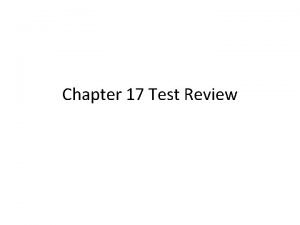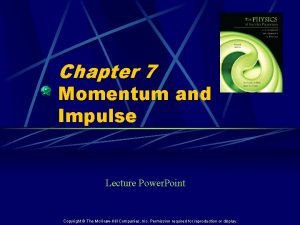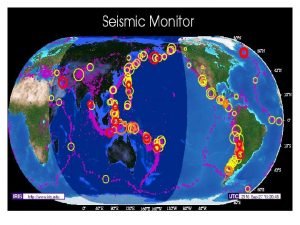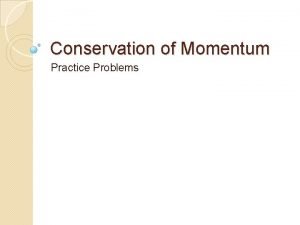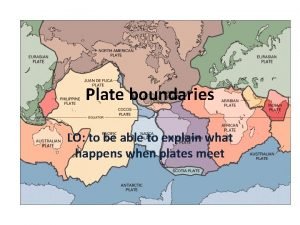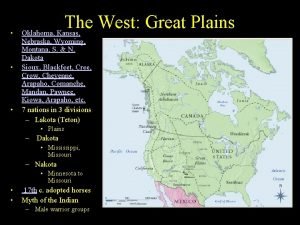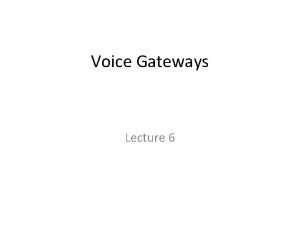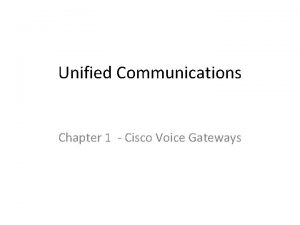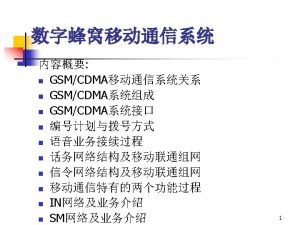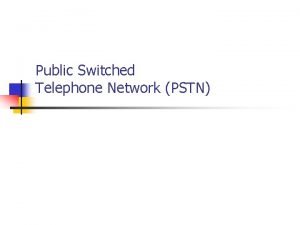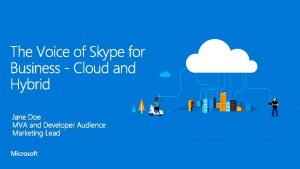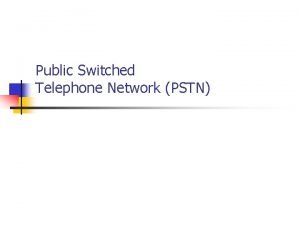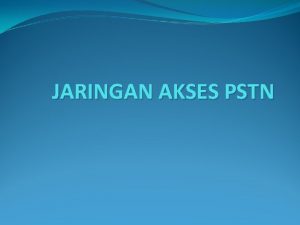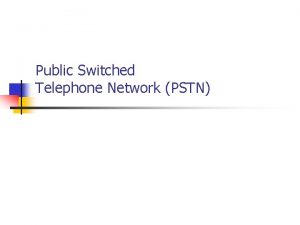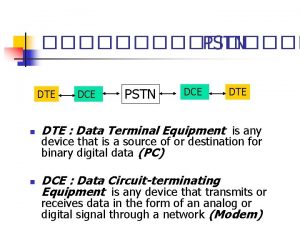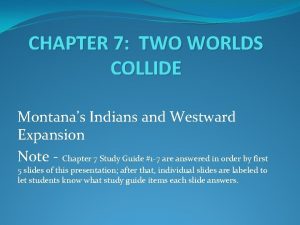IP and PSTN Two worlds collide Dr Tim
















- Slides: 16

IP and PSTN: Two worlds collide: Dr Tim Kelly, Co-ordinator, Strategies and Policy Unit, International Telecommunication Union (ITU) 18 July 2000 Note: The views expressed in this presentation are those of the author and do not necessarily reflect the opinions of the ITU or its membership. Dr Tim Kelly can be contacted by e-mail at Tim. Kelly@itu. int.

IP and PSTN: Two Worlds Collide Agenda l IP overtaking voice ð By circuit capacity ð By long-distance traffic volume ð By local traffic volume l Wholesale pricing models ð What makes the Internet different from the public switched telephone network? ð International IP connectivity l Developing country concerns ð Costs of being an Internet “latecomer” ð International co-ordination (D. 120)

Number of int’l circuits in use, worldwide, and by region 1998 (in thousands) Western Europe 300 IPL, 68% 250 200 150 Asia PSTN circuits PSTN, IPL, 41% 59% 100 50 International Private Lines (Internet) IPL, 18% 0 1995 PSTN, 32% 1996 Source: FCC. Applies to US carriers only. 1997 1998 Caribbean PSTN, 82%

Minutes of use by month, Hongkong SAR ('000 s) 1'250 1'000 Dial-up Internet (via PSTN) 750 500 250 International voice (incoming and outgoing) 0 4 98 6 98 8 98 Source: OFTA (www. ofta. gov. hk) 10 98 12 98 2 99 4 99 6 99 8 99 10 99 12 99

Deutsche Telekom Percentage change in call volume (minutes) 86. 3% 36. 0% -7. 1% -2. 1% Domestic longdistance Int'l outgoing calls Source: Deutsche Telekom annual report. 7. 2% Local calls Calls to mobile networks Calls to Internet (TOnline)

40% 35% Dial-up Internet traffic as % of total traffic minutes Telia (Sweden) 38% 30% 25% 27% 20% 15% 12% 10% 5% 0% 19. 5% Telenor (Norway) 18% Telecom Portugal 8. 5% 1998 1999 Source: PTO annual reports. Note: For Telia, Internet traffic as % of local minutes. For others, as % of

IP and PSTN: Two Worlds Collide Wholesale pricing of Internet l Domestic access ð Leased lines ð Dial-up lines l International connectivity ð Local half-circuit ð Foreign half-circuit (e. g. , from USA, Europe) l Traffic exchange ð Local ð Foreign

Different wholesale pricing arrangements Public switched telephone service l. Per minute wholesale pricing of end-to-end int’l traffic l. International accounting rate and settlements system applies l. Domestically-regulated interconnect regimes l. Access charges payable for call origination and termination l. Some transparency Public Internet service l. Usage-based wholesale pricing is rare (NZ and AUS are exceptions) l. Peering arrangements, usually based on capacity or traffic exchanged l. No end-to-end int’l settlement payments l. No regulation of peering arrangements l. No access charges payable for IP traffic in US l. No transparency

Settlements-based traffic PTO = Public Telecommunications Operator PTOs A & B split the cost of the int’l circuit Delivers traffic PTO A Collects traffic Pays settlement fees Collects revenues User 1 User 2 User 3 PTO B Terminates traffic Retains revenues User 1 User 2 User 3 For accounting rate traffic, a direct bilateral relationship is established between the origin and termination operators. Intermediate transit operators are compensated from the accounting rate which is usually split 50: 50. PTO B retains net settlement. ……. . .

Internet Peering traffic (Web) ISP = Internet Services Provider One-way (thick pipe) ISP A Two-way (thin pipe) Exchanges traffic Web 1 PTO B pays the full cost of the int’l circuit ISP B Requests Collects and terminates revenues traffic User 1 User 2 User 3 For Internet Peering traffic, ISP B pays for both halves of the International circuit(s) which are used for peering with ISP A. ISP B also pays for traffic exchange. ISP B may pay for the circuit directly, or in conjunction with one or more PTOs.

IP and PSTN: Two Worlds Collide Settlements and Peering: What’s the difference? l Settlement-payment traffic ð Substantial revenue transfers, from core to periphery of network ð Promotes “organic” network growth ð So, Operators generating less traffic than they receive have an incentive to keep prices high l Peering traffic ð Some revenue transfers, from periphery to core of network ð Promotes “spontaneous” network growth ð So, ISPs generating less traffic than they receive have an incentive to force prices down

Internet traffic flows are highly asymmetric Public switched telephone service l. Traffic flows are bilateral and broadly match value flow in that caller, who initiates the call, also pays for it l. Call-back reverses the direction of the call, from a statistical viewpoint, but caller still pays & benefits l. Traffic flows unbalanced between developed and developing countries Public Internet service l. Traffic flows are multilateral: A single session may poll many countries l. Web-browsing is dominant form of traffic: traffic flow is dominantly towards user who initiates the call. Web traffic highly asymmetric l. Newer forms of Internet traffic (telephony, push media, streaming video etc) reverses traffic flow to be from user which initiates the call

IP and PSTN: Two Worlds Collide Developing country concerns l Developing countries receive no international settlement payments for IP traffic ð Increasingly, incoming IP traffic includes IP telephony and fax traffic which they must terminate l They must pay to peer with US/EU backbone ð Peering costs are rising as IP traffic continues to grow exponentially l They must pay both half-circuits of the International Private Line to the foreign ISP ð Even though traffic flows in both directions over the circuit, once it is established l Telephone and fax traffic shifting to the Internet ð What will replace the US$7 bn from settlements?

Global PSTN traffic, 1998, Mill. Mins Source: Tele. Geography Inc. , 2000

Global Inter-regional IP backbone Source: Tele. Geography Inc. , Global Backbone Database. Data valid for Sept. 1999.

IP and PSTN: Two Worlds Collide Draft ITU-T Recommendation D. 120: International Internet Connection Noting the rapid growth of the Internet and Internet based international services: It is recommended that administrations* negotiate and agree bi-lateral commercial arrangements applying to direct international Internet connections whereby each administration* will be compensated for the costs that it incurs in carrying traffic that is generated by the other administration. Note: To be voted at the World Telecom Standardization Assembly in September 2000. * “Administration” means national administration of recognised operating agency
 Norton worlds together worlds apart
Norton worlds together worlds apart Suppose two waves collide and the temporary
Suppose two waves collide and the temporary Two football players collide and stick together
Two football players collide and stick together Mountain plates
Mountain plates Divergent boundary real world example
Divergent boundary real world example Two cars collide at an icy intersection
Two cars collide at an icy intersection Happens when two oceanic plates collide
Happens when two oceanic plates collide Two icebergs collide
Two icebergs collide Momentum practice problems
Momentum practice problems Slip slide collide game
Slip slide collide game Collide and slide algorithm
Collide and slide algorithm Collision theory states that
Collision theory states that Types of plate boundaries
Types of plate boundaries Sheridan college otr
Sheridan college otr Wohaw between two worlds
Wohaw between two worlds Types of voice gateways
Types of voice gateways Types of voice gateways
Types of voice gateways

